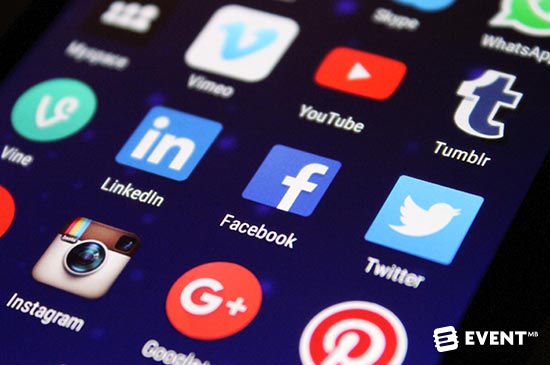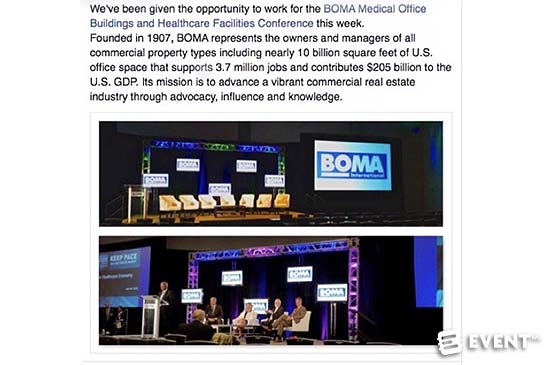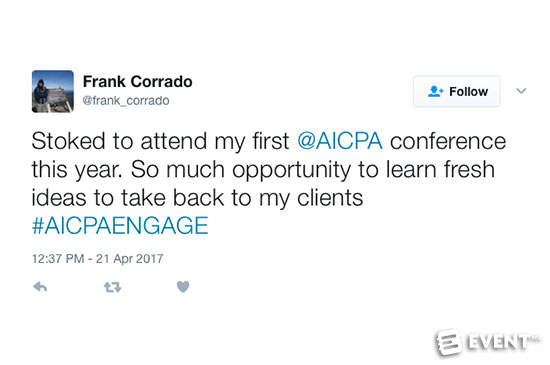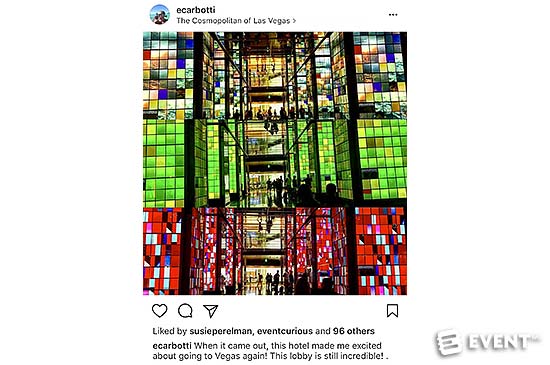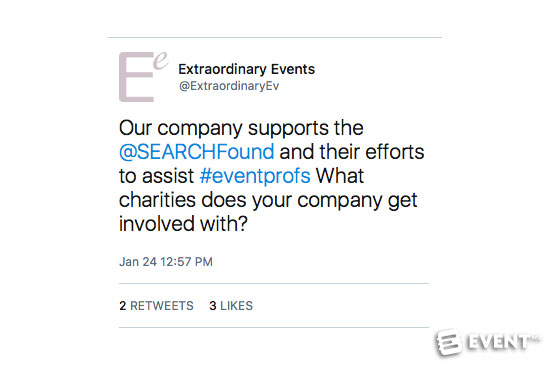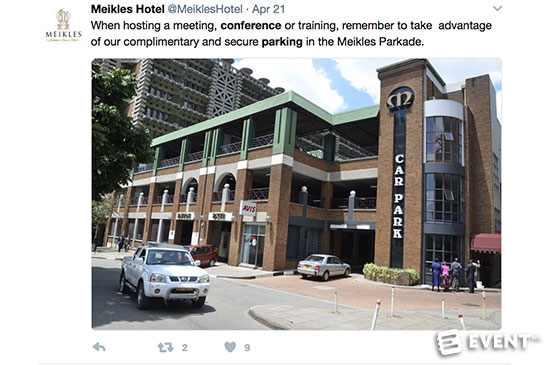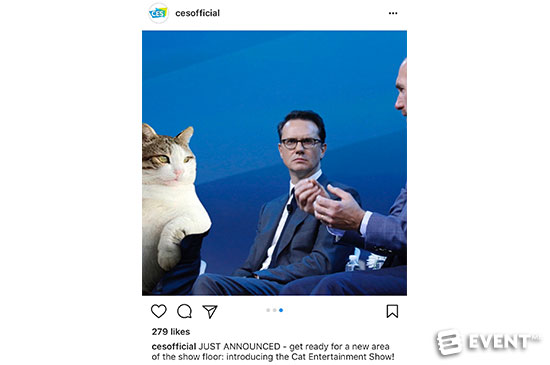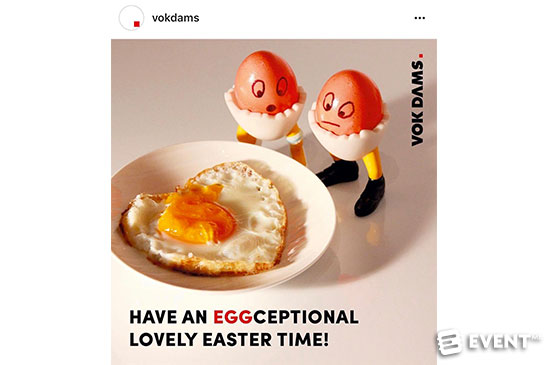Social media marketing has been around long enough now that certain truths have revealed themselves. While the platforms and nuances seemingly change daily, what people expect from brands has reached an equilibrium.
There are no long term successful quick fixes in social media marketing – you have to do the work. What that means is creating consistent campaigns that build brand equity which will result in increased trust and recognition. Here are 10 different campaigns that any event brand can adapt and use for successful long-term goals. None of these are quick fixes or growth hacks but are, instead, foundational ongoing tactics that will resonate with the people who matter to you the most in order to achieve your marketing goals.
-
Celebrate Your Team
Your greatest and most unique assets are always going to be your team. Social media campaigns that celebrate your team show clients and potential clients not only how much you value them but why they should want to engage with them on an event. No matter how automated and technologically sophisticated our industry becomes, people do business with people. Also remember that social media is a tool for more than just lead generation. Campaigns celebrating your team can have the objective of helping to retain amazing staff.
Best practices in these types of campaigns are to make sure you give everyone their due. Missing someone could result in the exact opposite out you were aiming for: alienation. Spreading out when you celebrate everyone and having it feel organic can be as easy as recognizing them on their birthday or their work anniversary. Create a template for the design with the customization of either their name or photo (or both) in order to keep your campaign consistent and branded. When you can, tag your team members in the posts. The best at what they do have pride in their work and appreciate being recognized, so often you will see them sharing these posts with their friends and family. There are powerful wins to be had from celebrating your team members through social media both externally and internally so make sure you have your variation of this as an ongoing campaign.
-
Your Client’s Missions
If your clients are vital to your brand’s mission, you should know what their mission is. When people think of social media marketing, they often only think of it in terms of lead generation and not of client retention but it has the potential to serve you both ways. Anyone who has been in sales long enough knows that a retaining a client is a more effective strategy than finding new ones which is why keeping your clients happy should be a 12 month campaign and not something you work on only during the planning process for their events. Research your best client’s mission statements and create content that tells their story and they impact they are making in the communities they are involved in.
Instead of simply posting photos of your client’s events you contributed to, give it context with the parameters of your client’s mission. No matter how much work you put into their event, they are the stars… that’s why they hired you. Create content that explains your role within their mission because that’s how they rate the worthiness of their pursuits. It’s not about what you do but what you facilitate your clients to be able to do.
-
Showing The Work
https://www.instagram.com/p/BSwirFvhKAu/
One of the reasons clients aren’t compensating event professionals enough for their work is that the whole story is not being told. By just showing the end result of the work in the form of pretty pictures, the work looks like magic to the outside world and not the reality: the culmination of untold hours of work. To land qualified leads, your marketing should underline how much effort goes into the execution of an event. Platforms such as Instagram excel in hosting in-the-moment photos and videos of behind the scenes activities. The stories feature on just about all social media lets you show off what you are doing in a way that’s a little more raw because it will disappear in 24 hours.
Before and after photos are an easy way to show the transformation of a room but you can do better. Facebook and Instagram offer albums which can help you tell stories from the first client meeting, the day of the event, and even the post event meeting. The inclusion of timelines, room specifications, and meeting notes will show everyone you are a true professional and your events require a lot of work to accomplish.
-
Expert Educators
If you know more about your service offerings than your clients, you need to be in the educating business. The best way to educate while marketing is through long form content marketing. You must invest in content marketing that is the same quality as your actual products in order to earn consumer trust in your expertise. Experts are share their knowledge through education and don’t engage in clickbait without any real substance. Blogging and social media go hand in hand if you want any form of return on investment. The best social media posts are ones that solve a problem and lead someone to your site for even more value.
A campaign of education should feature experts in your business speaking to their unique skills. It’s often hard to get those experts to write the blog post for your marketing team so make it easy on them. Create a questionnaire and interview them. Make sure you ask questions that result in some direct quotes that you can use on Twitter or create as graphics in a template you create for this campaign. Poll your clients and ask your sales team to determine what areas of your business require the most explaining or are the most misunderstood. Use that information to drive the topics and who you interview on your team in order to give the most important people to your business what they want.
-
Show Off Your Investments
In order to attract the clients you want, you need to separate yourself from the pack and the best way to do that is to show how invested you are in the success of your client’s events. If you have gear, you need to post pictures of it and give meaningful context to why that investment is important to your clients events. Sending team members to an event industry conference? That education is an investment you are making in your team members in order for them to be able to offer your clients the latest trends and awareness of the newest event technologies.
Some variation of a campaign called “investing in your events” where you drip posts out on your social media platforms informing clients and potential clients that you are seriously committed to the future of the work you will do with them will be memorable. If your team receives CPR and/or first-aid training, certification with specific software, or industry certifications such as CMP or CSEP, make sure you are telling those stories. Online it is easier and easier to appear as an expert but tangible investments like those mentioned above will ensure that the market understands where you rank.
-
Be Inspired
When a consumer is on the market to hire a creative person they are enticed by more than their work output. Commercial creatives are hired on their ability to interpret goals and make something no one has ever seen before. In order to sell that skillset, event professionals need to let the world know how they think and where they find their inspiration. If you are in the business of building structures for events, post photos of architecture and how it makes you feel. If you design events, photos of unusual objects might give those watching you window into how you think about aesthetics.
Creatives are always being inspired so make sure you use the right social media to let people in on your process. Make sure to always credit the source of inspiration as to not confuse that the work is yours. Examples of platforms and ways to use them to share inspiration:
- Twitter – Let your followers know who inspires you. Use quotes and tags when appropriate.
- Instagram – Close up photos of details in everyday experiences and how they make you feel or how it could impact an event. Use a consistent hashtag all your own in order to keep all these experiences together.
- Facebook – Use Facebook Live if there is something that moves you enough to talk about it for at least 10 minutes. If not, upload a video around 30 seconds that shows how passionate you are about your inspiration.
- Pinterest – Keep and ongoing board of the things that inspire you and the work it later affected.
-
Show You Care
Social value based buying is a trend on the upswing for a while now and continues to be a deciding factor for consumers. Large multi-nationals have been scrambling to show that fair-trade buying/sourcing, employee compensation, and environmental programs are implemented to stay competitive in the market. Events impact many regional and global communities and in order to tell the story of how responsible and caring you are, you need to dedicate campaigns of awareness to what you are doing. Your business should get behind a non-profit and choose a charity of choice. While it’s understandable to want to keep arrangements like that private as individuals, but you owe it to your clients for them to understand that they are indirectly contributing to a community.
Community is a broad term that can be applied to both the region you are based in as well as the industry you and/or your clients are part of. The event industry has a number of nonprofits including The SEARCH Foundation, Event Planners Take Action, The Meetings Industry Fund, and many others connected to associations. Find one that aligns with your organization’s mission and use your social media to help them with campaigns of awareness and fundraising. While donating money is vital to the missions of organizations you can impact, giving time can be just as or more meaningful to them. If you donate services or have team members that sit on boards for nonprofits, include that work in your gives back program. Add a page on your site to tell the story of your community involvement and make sure you have social media content that let’s others know that you are investing in the future of others.
-
Reject Objections
Anyone who works in sales knows the top three objections to working with their business. Examples are price, scale of the business, too young or too old, etc. Perception is reality when it comes to sales but marketing gets to mold perception so both departments need to work together. Objections to working with your company can be addressed upfront and framed in the context you want before anyone even enquires about your services if you dedicate social media resources to telling the story of why those objections are based on a false premise.
An example of an objection could be a venue being too far from the center of a city. If you know that is an issue for your sales team, social media posts with screenshots of your Google Maps directions can show that the trip is only 8 minutes. You could speak to the ease of parking, the scenic grounds, and many other ways you can turn a negative into positives. When enquiries come to you already knowing these features, they are less likely to be put off by what had been a typical objection.
-
Be Funny
Don’t be afraid to be humorous! One of the many reasons small businesses have a hard time rising above the noise online is that they communicate in a very stale and dry way. With the proliferation of .gifs, facial recognition AR, emoji, and memes communication online has become increasingly casual. If you know your audience and know their pain, try to relieve that pain with humor. Authenticity is an underpinning of exceptional social media campaigns and if you and your team are actually jovial – use it!
Memes and .gifs are very likely to be shared so make sure they are utilized on a platform that gives you that option natively like Twitter and Facebook. If you are confused by what memes mean or where to find the latest .gifs, visit Know Your Meme or Giphy for education and inspiration.
-
Make The Ask
In the world of optimal social media content, you might forget to even ask for the sale. While those who truly don’t get it do nothing but try to close, the more savvy might be too timid to try and convert. Like all things, balance is key and on social media your balance should be at least 80/20 if not less frequent with your sales driven posts. If you truly believe in what you offer and that content marketing is an extension of your business offerings, this integration should be natural. Framing posts dedicated to converting your followers into contacting you about your services should be about solving their problem and all about them.
Each product and service you offer should be part of your social media content calendar. Look at each page on your site and each product in your inventory and determine how that solved a previous client’s problem. Poll past clients to get testimonials about how those services made them feel and turn those into posts with strong calls to action. Social media platforms like Instagram make calls to action more complicated so consider changing the link in your bio to the direct link to the service mentioned in a post for a finite period of time. While social media is primarily about earning and maintaining trust in order to convert at the right time, smart marketers know when to ask for the opportunity to work together to reach client goals.
In Conclusion
The difference between those who are successful with any strategy and those who are not comes down to consistent execution. Creating a content calendar that incorporates campaigns like these will ensure that your specific brand objectives will be met. Make sure to periodically analyze the effectiveness of these campaigns in order to adjust your messaging. Know your audience, know your goals, and constantly deliver value based on what you excel at.
